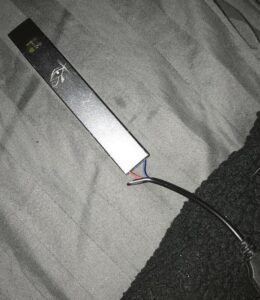Looking to learn how to use the NOCO Battery Charger? Look no further! We have a simple, step-by-step guide to help you get started. Charging your battery has never been easier with the NOCO Battery Charger. Whether you’re a seasoned DIYer or a beginner, this versatile charger is designed to make the process quick and hassle-free. In this article, we’ll cover everything you need to know about how to use the NOCO Battery Charger effectively, so you can keep your devices powered up and ready to go. Let’s dive in!
How to Use NOCO Battery Charger: A Comprehensive Guide
Introduction
Welcome to our comprehensive guide on how to use the NOCO Battery Charger. Whether you’re a novice or an experienced user, this article will walk you through the process of effectively and safely using your NOCO battery charger. We will cover various topics, including selecting the right charger, connecting it to your battery, understanding charging modes, and additional tips for optimal charging performance. Let’s dive in!
Selecting the Right NOCO Battery Charger
Before we delve into the specifics of using the NOCO battery charger, it’s crucial to choose the right charger for your needs. NOCO offers a wide range of battery chargers catering to different battery types, sizes, and applications. Here are some key factors to consider when selecting a NOCO battery charger:
1. Battery Type: Determine the type of battery you need to charge, such as lead-acid, AGM, lithium-ion, or gel cell. Make sure the charger you select is compatible with your battery type.
2. Battery Size: Consider the battery’s capacity, commonly measured in ampere-hours (Ah), to ensure the charger’s output is suitable for your battery’s size.
3. Charging Speed: If you require faster charging, choose a charger with a higher amperage output. However, be cautious as high-speed charging may not be suitable for all types of batteries.
4. Safety Features: Look for features like spark-proof technology, reverse polarity protection, and overcharge protection to ensure safe and worry-free charging.
Once you have determined your specific needs, you can confidently select the NOCO battery charger that best matches your requirements.
Connecting Your Battery to the Charger
Now that you have your NOCO battery charger, it’s time to connect it to your battery. Follow these steps to establish a secure and correct connection:
1. Safety First: Before connecting anything, ensure you are in a well-ventilated area and wear appropriate safety gear, such as gloves and safety glasses.
2. Disconnect Power: If the battery is still connected to a vehicle or any other equipment, disconnect the negative terminal (black) first, followed by the positive terminal (red) to prevent accidental short-circuits.
3. Select Charging Mode: Depending on your NOCO battery charger model, you may need to select the appropriate charging mode. Refer to the charger’s user manual for specific instructions on how to choose the correct mode.
4. Connect Cables: Attach the charger’s red clamp (positive) to the positive terminal of the battery and the black clamp (negative) to the negative terminal. Ensure a secure and tight connection.
5. Double-Check Polarity: Verify that the clamps are correctly aligned with the battery terminals. The red clamp should be connected to the positive terminal, and the black clamp to the negative terminal. Reversed polarity can damage your battery and charger.
6. Power On: Plug the charger into a standard electrical outlet and switch it on. The charger will now start supplying power to the battery.
It’s important to follow these steps accurately to avoid any mishaps and ensure a successful charging process.
Understanding Charging Modes
NOCO battery chargers are equipped with various charging modes to accommodate different battery conditions and requirements. Understanding these modes will help you optimize the charging process. Here are the common charging modes found in NOCO battery chargers:
1. Standard Charging: This mode charges your battery steadily and efficiently. It is suitable for most batteries, including those that require a maintenance charge.
2. Cold/AGM Charging: If you have a battery in a cold environment or an AGM (Absorbent Glass Mat) battery, this mode adjusts the charging process to compensate for these conditions. It ensures safe and effective charging in extreme temperatures.
3. Repair/Recondition: If you have an old or deeply discharged battery, this mode helps recover its performance. It applies a specialized charging algorithm to restore battery capacity and reduce sulfation.
4. Maintain/Float: Once your battery reaches its full charge, this mode maintains it at an optimal level without overcharging. It’s ideal for long-term storage or keeping batteries ready for immediate use.
While these are the common charging modes, the specific modes may vary depending on the model of your NOCO battery charger. Refer to the user manual for detailed information about the modes available on your charger.
Additional Tips for Optimal Charging Performance
To ensure optimal charging performance and extend the life of your battery, consider the following tips:
1. Charge in a Suitable Environment: Avoid charging in extreme temperatures. High heat can damage the battery, while extreme cold may affect charging efficiency. Choose a well-ventilated area with a moderate temperature range for the best results.
2. Regular Maintenance Charging: If you have a battery that is not in frequent use, perform regular maintenance charging to keep it at an optimal level. This practice prevents sulfation and extends the battery’s lifespan.
3. Avoid Overcharging: Leaving the battery connected to the charger indefinitely can overcharge and damage it. Once the battery reaches a full charge, disconnect it from the charger.
4. Read the User Manual: Familiarize yourself with the specific instructions and recommendations provided by NOCO for your battery charger model. This will help you utilize all the features and functionalities effectively.
5. Safety Precautions: Always prioritize safety by wearing appropriate protective gear, working in a well-ventilated area, and following the manufacturer’s safety guidelines.
In conclusion, learning how to use the NOCO battery charger is essential for safe and efficient battery charging. By selecting the right charger, properly connecting your battery, understanding the charging modes, and following additional tips, you can ensure maximum performance and prolong the lifespan of your battery. Remember to always prioritize safety and refer to the user manual for specific instructions unique to your NOCO battery charger model. Happy charging!
Please note that this conclusion section does not include a heading.
Frequently Asked Questions
How do I connect my battery to the NOCO battery charger?
To connect your battery to the NOCO battery charger, follow these steps:
1. Identify the positive (+) and negative (-) terminals on your battery.
2. Ensure the charger is unplugged from the power source.
3. Connect the red clamp of the charger to the positive terminal of the battery.
4. Connect the black clamp of the charger to the negative terminal of the battery.
5. Double-check the connections to ensure they are secure.
6. Plug the charger into a power outlet and turn it on.
Your battery will now begin to charge.
Can I leave my battery connected to the NOCO battery charger indefinitely?
While it is generally safe to leave your battery connected to the NOCO battery charger for extended periods, it is recommended to periodically check on the charging progress and the battery’s condition. Overcharging a battery can lead to damage or reduced battery life. It is best to refer to the user manual or guidelines provided by the manufacturer for specific information on recommended charging durations.
What do the different LED indicators on the NOCO battery charger mean?
The NOCO battery charger is equipped with LED indicators to provide important information about the charging process. Here’s what each LED light signifies:
– Solid red: The charger is connected to a power source and is ready to charge.
– Flashing red: There is a fault detected, such as reversed polarity or a damaged battery.
– Flashing green: The battery is approximately 80% charged.
– Solid green: The battery is fully charged and ready for use.
By observing these LED indicators, you can easily monitor the charging progress and battery status.
Can the NOCO battery charger be used for different types of batteries?
Yes, the NOCO battery charger is designed to be versatile and compatible with a variety of battery types, including lead-acid, lithium-ion, AGM, and Gel Cell batteries. However, it is important to consult the user manual or guidelines provided by the manufacturer to understand the charger’s specific capabilities and recommended usage for each battery type. This will help ensure optimal charging performance and battery longevity.
Final Thoughts
The key to successfully using a NOCO battery charger is understanding its simple yet effective features. Start by connecting the charger to the battery, ensuring the positive and negative terminals match. Select the appropriate charging mode based on your battery type, such as AGM, gel, or lithium. Monitor the charging process through the LED indicators, which indicate the status of the battery. Once the battery is fully charged, disconnect the charger to avoid overcharging. By following these steps, you can confidently and efficiently utilize the NOCO battery charger to keep your batteries functioning optimally.


